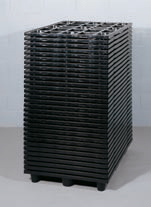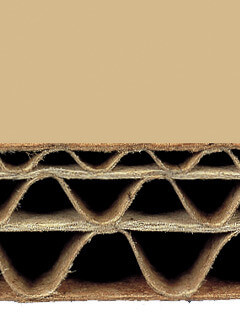Plastic pallets account for about ¼ of the total number of pallet types used in Europe. Their great advantage is their low weight, longer service life and exceptional hygienic properties. Compared to traditional wooden pallets, they do not require any phytosanitary measures against pests and parasites within the framework of the ISPM 15 standard binding in international trade. And what is another advantage of plastic pallets? Variants that are stackable are available on the market!
With stackable plastic pallets that have retractable “feet” you save up to 73% of storage space due to their height compatibility compared to standard pallets. In addition, these types of pallets are easy to stack. The material used, which is recycled plastic, is very light and low maintenance. They are easy to wash, can withstand steam cleaning and are resistant to temperatures from -20°C to +60°C. In addition, compared to wooden pallets, there is no risk of injury or damage to loads due to sharp nails or splinters.

Plastic pallets can easily withstand acids, grease and solvents. They have a static load capacity of up to 4,000 kg and can be loaded up to 1,400 kg during cargo handling. Other advantages include dimensional and weight stability for optimal weighing and storage of goods in the company.
And one more plus point: the pallets are made from 100% recycled plastic and are recyclable, thus reducing the consumption of raw materials and protecting the environment!
Of course, there are also other stackable pallets, such as Inka pallets, which are made from wedged pressed wood. Here, however, a lower load capacity of up to 2700 kg under static and up to 900 kg under mobile load as well as a reduced possibility of cleaning must be taken into account…













